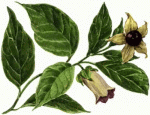Botany
|
28 february 2015 05:37:13 |
| Composition, variation, expression and evolution of low-molecular-weight glutenin subunit genes in Triticum urartu (BMC Plant Biology) |
|
Tweet Background:
Wheat (AABBDD, 2n = 6x = 42) is a major dietary component for many populations across the world. Bread-making quality of wheat is mainly determined by glutenin subunits, but it remains challenging to elucidate the composition and variation of low-molecular-weight glutenin subunits (LMW-GS) genes, the major components for glutenin subunits in hexaploid wheat. This problem, however, can be greatly simplified by characterizing the LMW-GS genes in Triticum urartu, the A-genome donor of hexaploid wheat. In the present study, we exploited the high-throughput molecular marker system, gene cloning, proteomic methods and molecular evolutionary genetic analysis to reveal the composition, variation, expression and evolution of LMW-GS genes in a T. urartu population from the Fertile Crescent region.
Results:
Eight LMW-GS genes, including four m-type, one s-type and three i-type, were characterized in the T. urartu population. Six or seven genes, the highest number at the Glu-A3 locus, were detected in each accession. Three i-type genes, each containing more than six allelic variants, were tightly linked because of their co-segregation in every accession. Only 2-3 allelic variants were detected for each m- and s-type gene. The m-type gene, TuA3-385, for which homologs were previously characterized only at Glu-D3 locus in common wheat and Aegilops tauschii, was detected at Glu-A3 locus in T. urartu. TuA3-460 was the first s-type gene identified at Glu-A3 locus. Proteomic analysis showed 1-4 genes, mainly i-type, expressed in individual accessions. About 62% accessions had three active i-type genes, rather than one or two in common wheat. Southeastern Turkey might be the center of origin and diversity for T. urartu due to its abundance of LMW-GS genes/genotypes. Phylogenetic reconstruction demonstrated that the characterized T. urartu might be the direct donor of the Glu-A3 locus in common wheat varieties.
Conclusions:
Compared with the Glu-A3 locus in common wheat, a large number of highly diverse LMW-GS genes and active genes were characterized in T. urartu, demonstrating that this progenitor might provide valuable genetic resources for LMW-GS genes to improve the quality of common wheat. The phylogenetic analysis provided molecular evidence and confirmed that T. urartu was the A-genome donor of hexaploid wheat. |
| 94 viewsCategory: Botany |
 Two-dimensional multifractal detrended fluctuation analysis for plant identification (Plant Methods) Two-dimensional multifractal detrended fluctuation analysis for plant identification (Plant Methods)High-throughput phenotyping of seminal root traits in wheat (Plant Methods) 
|
| blog comments powered by Disqus |
MyJournals.org
The latest issues of all your favorite science journals on one page
The latest issues of all your favorite science journals on one page



